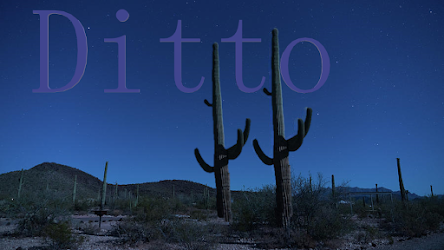The public library system in LA County uses a streaming service called Kanopy. It's free, doesn't make recommendations, displays all titles uniformly (no annoying splash images or promo slideshows or god forbid autoplay). I love that.
I like how deep and eclectic the selection is. Do I need to be able to watch a documentary about like, every single thing a documentary could be about besides a murder, or to be able to watch every single film by South Korean mumblecore director Hong Sang-Soo, who makes one or even two movies every god damn year - No. I like that I could.
I reaaaaaally like that I could watch - and did - so many movies distributed in the 2000s under the brand Tartan Asia Extreme.
What's That
Tartan Films was a UK-based film distributor - that means it was The Money bringing movies to the different kinds of places people could see them: theaters, festivals, DVD & video-cassette players. In the period I’m concerned with, someone named Hamish Mcalpine ran Tartan. Larry Clark, famous for taking pictures of his friends shooting drugs, once tried to strangle Mcalpine for want of patriotism after a disagreement the two had about the incipient War on Terror. Mcalpine introduced Pedro Almodovar, Todd Haynes, and the Wong Kar Wai film IN THE MOOD FOR LOVE to Europe, and theoretically got the Gaspar Noe film IRREVERSIBLE through British Film Board censorship.
Asia Extreme was a brand created by Tartan to market crime and horror films made in East Asia. Reportedly what inspired the label was RINGU and AUDITION. AUDITION, which features torture, might be the kind of movie we'd expect to inspire a label Extreme, but RINGU is pretty lowkey. Maybe what it has that's so extreme is using something from the premise of watching a movie against you. Point is: the movies weren't Extreme just because they were violent. They got under their audience's skin in creative ways. What that has to do with Asia - which, in the case of the titles referenced in this post, means two very different countries, whose histories involve war and enslavement and xenophobia of the other, and the enormous burdens that may separate people therein - I don't think it's for me today to entirely know.
Horror is the genre par excellence of getting under the skin. But an interesting thing about Tartan's marketing brand is that it also included crime movies, and, in some cases, movies where there are no obvious genre elements, such as in the filmography of director Kim Ki-Duk. Crime and horror movies have a pretty convincing single origin - if you're attached to genealogies - German expressionist film. But I thought it'd be more interesting - as an experiment - to take for granted there could be something as Extreme for a genre of film. And from the movies, try to work out - independently of them being horror or crime or exoticized foreign imports - what makes Extreme extreme.
Extreme Trouble
What's not in any of the films? No, like, vampires, no science fiction really, nothing not roughly set in the present day - (just two: R POINT, during the Vietnam War, and BATTLE ROYALE in a near-future). Across the crime-horror-drama divide there are such things in the movies as: maniacs, ghosts, and something like, being down-and-out. The ghosts have different grievances, and the maniacs have different perversions, and the people who are down-and-out have different terrible luck, but these three dreadful things - across the small catalogue I'm working off of - seem ubiquitous.
What ghosts, maniacs, and being pinched in the gears of industry have in common is that they seem to be modern problems. There might've been a great extreme movie released in Bangkok that year about a horrible monster that could not be confused for a ghost, or a crime movie about the Rape of Nanking, and for marketing purposes, movies set in the present day may seem more believable as cutting-edge contemporary. Or: a movie that is Extreme rarely stars something that is both dreadful and strictly fantastical.
Ghosts
The ghosts in the ghost selection of the films are dead women, four of the six are specifically young girls. The most dreadful shot in A TALE OF TWO SISTERS is a sequence where we are told there is a girl under the sink, glimpsed in a second of out-of-nowhere chaos, a sudden seizure that brings someone down to the floor. When we do finally get around to seeing what's under there it's a necrotic hand. DARK WATER has, in its most dreadful moment - when the mother thinks she's saved her daughter and sees that actually she was cradling the ghost - a waterlogged corpse. The corpse in ARANG has been perfectly preserved, however, not because of ghostly glamor, but from - possibly bogus I'm not sure - it was convincing at the time - chemistry reasons: of being buried in a salt pile. Even the I suppose life-affirming gore of birth is purified by the salt in the also possibly unbelievable fact that the dead body delivered its fetus, also preserved. ARANG, like a TALE OF TWO SISTERS, is based on a fairy tale, and this must go far to explain the latter's convolution and the former's beggaring belief. R POINT isn't really that scary but there are shots of the wind in the grass at night. In RINGU of course the most dreadful scene is immediately after we watch the cursed video tape and find reflected in the dead television set's round, the ghost in the corner who was watching us watch it. The WISHING STAIRS also isn't scary but it does have one perfect shot of the eponymous steps at the end. SPIDER FOREST, a third not very scary film in this collection, has, again, for its most under-the-skin moment, a wonderful wide, which shows the ghost in the forest levitating with perfect stillness far above and ahead of the one observing it.
A good movie ghost has routines that are brutal. It does this on these days it goes here at night it wants only this because of the single horrible thing that happened to it: cause-and-effect become brutal - crude and exaggerated - in the matter of a ghost. Children know regimes - parents, soccer practices, homework - and in the case of certain of these countries, their educators corporal punishments. The ghosts are hiding under the sink, or in the art room, or in the salt pile, or in the viewing of a video tape, and seeking them out is usually the most dreadful moment in ghost horror movies. Because then you're playing its game. You subject yourself to the crude exaggerations of the regime.
Maniacs
My personal favorite of the movies discussed, BLOODY REUNION, by Director Im Dae-Woong, has several of the most fucked-up kills I've ever seen in a horror movie, a deeply unsettling dramatic premise whereby the pathetic are also despicable, and a desolate twist. The scariest thing in it is probably when someone is force-fed broken razor blades. In I SAW THE DEVIL it is a script element: not only is there a total psychopath which the hero has to deal with, but that, with the breeziness of strolling over to a neighbor's front yard, one can find: even more fucked up people. It's the cannibal friend in I SAW THE DEVIL that is its most appalling feature. H is a messy movie, with a messy idea about reproductive health, but it does have a luxurious image of someone's personality destroyed oceanside. Director Takashi Miike's AUDITION - which started this whole thing - is good all the way through, with its nearly SCREAM-like postmodern-y refusal to straightforwardly engage with the conventions of a horror movie, dreadfully concealing its maniac in a blue little drama about getting a little old and being a little tired and wanting a little love. One second of its final sequence I can't forget: the way the maniac lopes away, like a child excited to surprise someone for a birthday party.
A good movie maniac will pervert trust bonds. Whatever it is that's supposed to hold people together, a good movie maniac confuses. They make their tortures out to be happy birthday surprises. Their favorite teacher is their sworn enemy. Their mother is someone they want to have killed (I dunno I fell asleep during H). Or that to them, paying a visit is a tour of hell. The most dreadful sequences with movie maniacs in them are when the maniac is shockingly identified - and before that - their fetishes.
Down and Out
The unlucky and unloved. Which are horrible get-underneath-your-skin type problems. It may be that in the way that RINGU leaps out of the screen with its premise, these movies do the same with the notion you paid $25 bucks to see them. Depending on what $25 dollars means to you, and what it can be like to think of what $25 dollars might mean to someone else, this is a very unsettling premise. To be down-and-out in a movie - when the movie is good - makes prices sharp. Most of them here feature kids sold-for-parts. And knives, lots of knives (Many East Asian countries have laws against owning firearms).
The most dreadful moments in these films are when the children are ruined. SYMPATHY FOR MR. VENGEANCE's drowning. THE MAN FROM NOWHERE's jar of eyes. LADY VENGEANCE (a possibly self-reflective example) parent characters who watch footage of their kids' tortures and executions. BATTLE ROYALE gives the kids a fighting chance - but maliciously. The movie, so much more hardcore than any of its later inspirations - which are, strangely, a lot of content marketed to kids, YA novels like the THE HUNGER GAMES, video games like FORTNITE - never cuts less than to the bone with the fact that in a kill-or-be-killed environment, one kid's fighting chance is at the expense of another. Its best scene is either every of one these murders or its first scene: when the kids first get distributed to them their provisions. Director Kim Ki Duk provides a few outliers with movies not primarily featuring kids. His down-and-out films have in common their best scenes taking place during brightest day, in the lucky people places: a mall where an insane former coast guard in the COAST GUARD does bayonet drills, and a park where the good and normal girls go walking around, and - when you're the bad guy in BAD GUY - you are irrepressibly drawn to kiss them.
THE SCORE
So an Extreme movie seems to be one where
something dreadful
is defined by
- the pervasiveness of a crude and exaggerated order
- shockingly confused attachments to people and things
- the invincibility of high costs of living
- in the vernacular of the present day
.
.
So basically here's a list of some really good movies you can like watch for free dawg...














